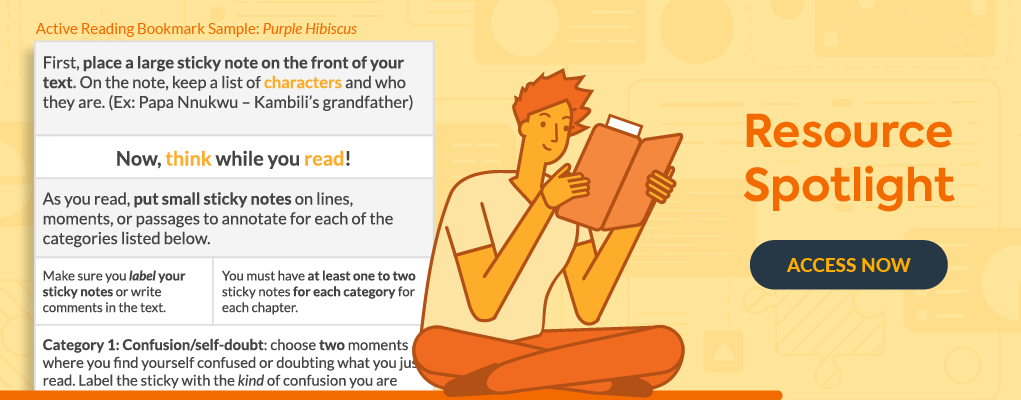Resource Spotlight: Active Reading Bookmark
Don’t Spoil It. Let Them Build Skills!
I clicked through the PowerPoint….and wow. Beautiful images. Fun fonts, great colors. Cool slide transitions. All the information seemed to be accurate. And it included a lot: author background, character introductions, setting, plot details, and even theme. The PowerPoint seemed to be exactly what I needed to introduce the novel Purple Hibiscus to my students.
Excited, I took my laptop over to my colleague in the classroom next door. We collaborated on everything and I knew she’d be excited to see this resource I had found.
“Um…” she said.
“Wait, you don’t like it?”
“Well. It’s not that I don’t like it. It just seems like all the information is already there for students. Do we really want to give them all this before they read the novel?”
She had a point. As much as I wanted to use that beautiful PowerPoint, my students didn’t need to already know the theme before they read the novel. They needed to discover the theme as they read the novel.
Did we use that PowerPoint? Pieces of it, yes. We used it for a bit of scaffolding to introduce the setting, because we knew our students needed an introduction to the religious and historical context in the novel. But, out of this moment with my colleague next door was born a new resource: the Active Reading Bookmark.
A Messy Adventure with the Active Reading Bookmark
The Active Reading Bookmark prompts students to explore the text on their own, without a teacher telling them important concepts beforehand. It is a skill-building tool that supports students with comprehension and analysis as they read a text, giving them ownership over their understanding. Students annotate as they read and work through the process of making meaning and building understanding. Does it mean that they will have to wrestle with the text, that they might have moments where they have questions or need to re-read… and then re-read again? Absolutely. But that experience will lead them to build skills as readers and thinkers, rather than just recipients of plot summary who rely on the interpretations of others.
Included in the resource is everything you need to share this tool with students: an explanation and template, ideas for how to model active reading and annotation (ideally, students use sticky notes to mark places in the text and handwrite notes on the sticky notes), and sample bookmarks for two novels.
Learning is very often not a pretty slide deck. In fact, learning to read actively, building skills in comprehension and analysis, is more likely to be kind of messy: sticky notes and question marks and notes in the margin. Give your students some structure, some support, and a road map for this messy adventure, and the result will be far more impressive .


